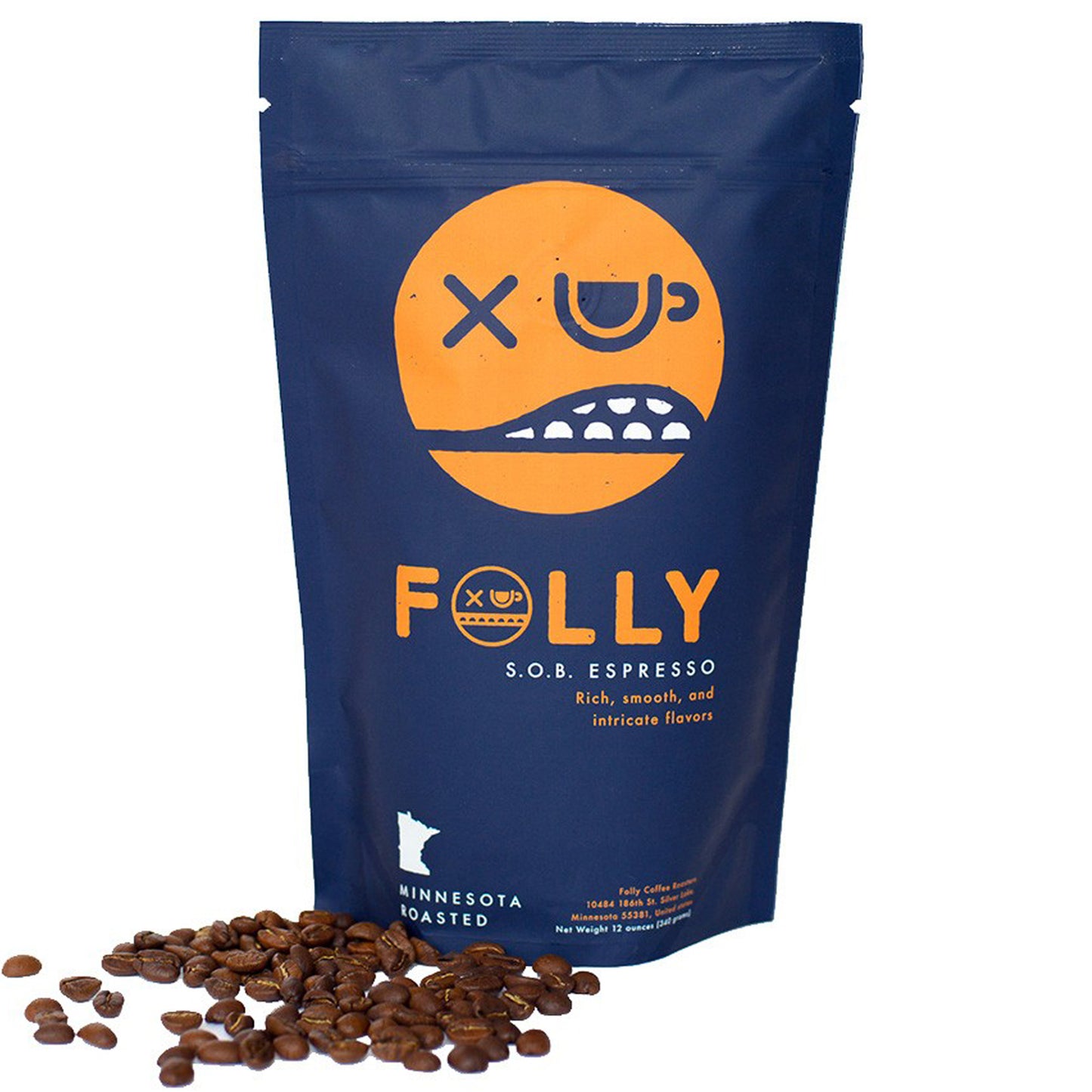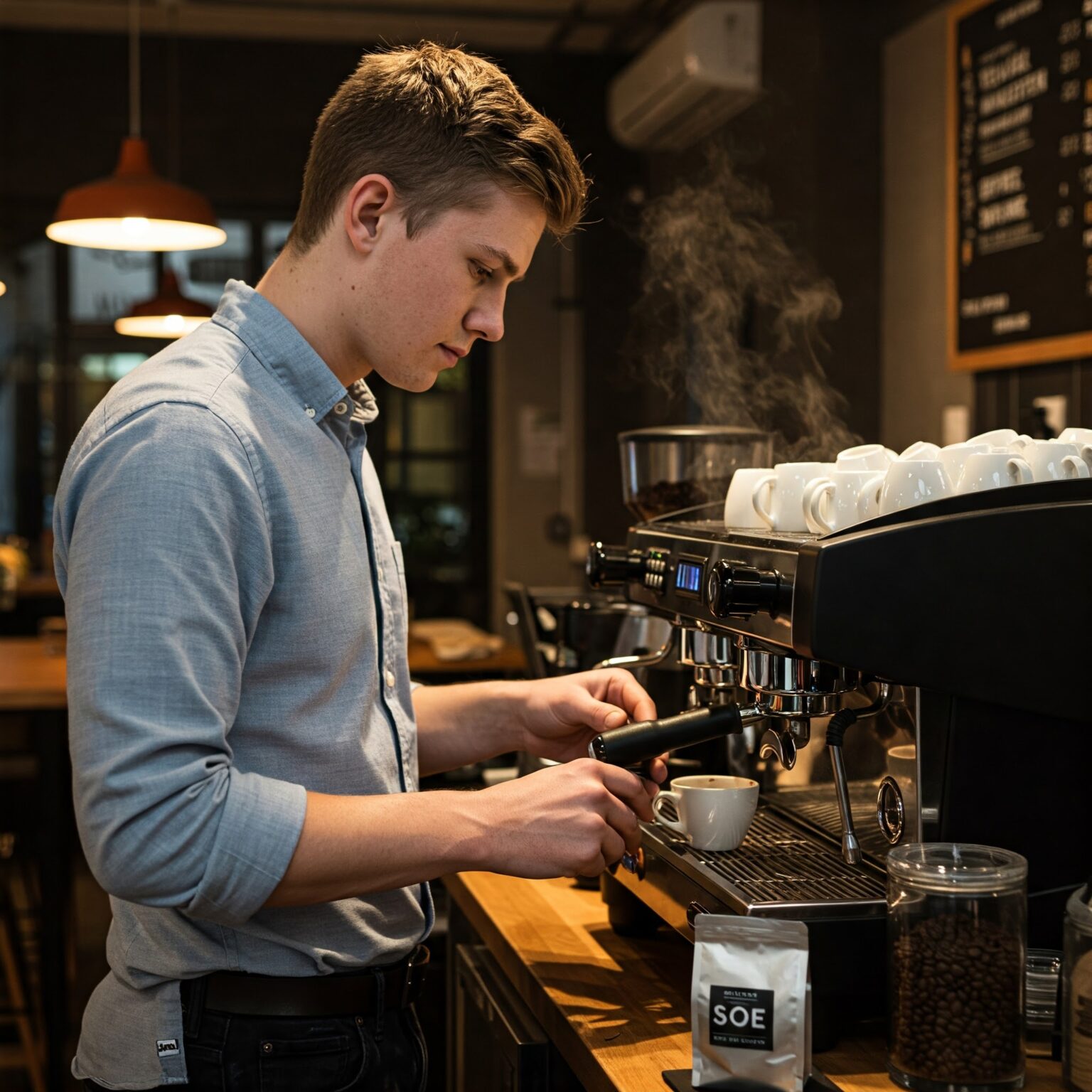Uncovering the Origins Behind Specialty SOE Single Origin Espresso
Wiki Article
Coffee Beans Uncovered: Uncovering the Keys of Espresso and Blended Coffee Beans
When you consider coffee, what comes to mind? Is it the rich fragrance of coffee or the complexity of a well-crafted mix? Understanding the subtleties of coffee beans can change your experience. Each range, from Arabica to Robusta, holds its very own tricks. As you check out better, you'll reveal exactly how these beans form tastes and effect sustainability. What might you uncover regarding your next mug?The Beginnings of Espresso: A Historic Point Of View
Although espresso is currently a staple in coffee society worldwide, its origins trace back to the early 20th century in Italy. In 1901, Luigi Bezzera patented the initial coffee device, intending to make coffee faster than conventional approaches.Understanding Espresso Beans: Selections and Qualities
When you think concerning espresso, it's important to recognize the various bean varieties and their one-of-a-kind tastes. Each type brings a distinct personality to your cup, affected by variables like roast levels. Understanding these elements can elevate your espresso experience significantly.Coffee Bean Varieties
As you discover the globe of coffee, you'll swiftly uncover that not all beans are created equivalent; each range brings its own one-of-a-kind tastes and features to your cup. The most popular types consist of Arabica and Robusta. Arabica beans are understood for their smooth, nuanced tastes and lower high levels of caffeine web content, making them a favorite among coffee lovers. On the other hand, Robusta beans load a more powerful punch with higher caffeine and a much more bitter preference, typically favored in blends for their crema-enhancing high qualities. You could likewise run into specialty beans like Liberica and Excelsa, which supply distinct accounts and are less typical. Each selection supplies something different, so experimenting will assist you find your perfect coffee.Taste Profiles Explained
Recognizing the taste accounts of various espresso beans can elevate your coffee experience. Each bean variety supplies distinct characteristics that affect preference, mouthfeel, and aroma. Arabica beans usually offer a sweeter, more complicated flavor with tips of fruit and floral notes, while Robusta beans tend to be bolder, with nutty and earthy touches.When you check out single-origin beans, you might find unique regional flavors-- Main American beans may be intense and citrusy, whereas Italian blends frequently supply abundant, chocolatey notes.
Roast Levels Effect
Roast levels play an essential role in forming the taste and fragrance of coffee beans, influencing your general coffee experience. Comprehending these roast degrees aids you pick the coffee that fits your preference choices. Trying out with different roasts can lead to delightful explorations, enhancing your appreciation for espresso.The Art of Blending: What Makes Blended Coffee Distinct
What makes combined coffee so remarkable? You can experiment with various mixes to improve acidity, body, and sweetness, resulting in a brew that's richer and extra complex than a single-origin coffee.Plus, blending can help preserve uniformity, using a dependable flavor experience regardless of seasonal variations in beans. Whether you're a home or a barista brewer, understanding the art of blending opens up a globe of creative thinking and flavor opportunities, making your coffee experience truly distinct.
Taste Profiles: Tasting Notes of Espresso vs. Blended Coffee
Combined coffee provides a world of taste opportunities, but when it concerns coffee, you're considering an extra focused experience. Espresso generally showcases vibrant, abundant flavors with a thicker mouthfeel. You could discover notes of dark chocolate, sugar, or even hints of fruit, depending upon the beans. The strength can be both satisfying and revitalizing.On the various other hand, combined coffee offers an intricate tapestry of flavors. You can explore a variety of sampling notes, from pleasant and nutty to floral and fruity. Each mix can use something unique, usually combining beans from different areas to create a balanced account.
While espresso supplies a strike, blended coffee invites you to savor the nuances. Whether you favor the robust strength of coffee or the detailed tastes of mixed coffee, each cup informs its own tale, waiting on you to find.
Developing Techniques: Developing Your Coffee Shot
To achieve the best coffee shot, recognizing the developing methods is essential, as even minor changes can considerably affect the flavor and high quality. Start by utilizing fresh, high-quality coffee beans; grind them prior to brewing for optimum flavor. Objective for a fine work, concerning the uniformity of salt, to ensure excellent extraction.Following, take notice of your water temperature level; it should be between 195 ° F to 205 ° F. Too warm or also cold can ruin your shot. Use concerning 18-20 grams of coffee for a dual shot, and tamp it equally with solid pressure to produce a consistent puck.
A longer extraction can lead to resentment, while also short can result in sour tastes. Exercise these strategies constantly, and you'll refine your skills, attaining that rich, robust espresso shot you crave.
The Function of Roast Degrees in Espresso and Blended Coffee
After mastering the developing strategies for espresso, it's time to consider just how roast degrees affect the taste profile of your coffee. Light roasts have a tendency to highlight the coffee's origin, offering brilliant level of acidity and fruity notes, while tool roasts balance acidity and sweet taste, creating an all-around flavor.
Checking Out Sustainability: Ethical Sourcing of Coffee Beans
When you select coffee, you're not simply selecting a flavor; you're deciding about the effect on farmers and the setting. Comprehending Fair Trade techniques, natural farming techniques, and qualification criteria can help you sustain sustainable coffee sourcing. Let's discover how these aspects add to an extra moral coffee experience.Fair Trade Practices
Fair Profession methods play a necessary function in making certain that coffee beans are sourced ethically and sustainably. You sustain farmers that obtain reasonable salaries and work in risk-free conditions when you select Fair Profession coffee. This dedication to moral sourcing assists combat destitution and promotes community development in coffee-growing areas. You'll find that Fair Trade certification additionally encourages environmentally pleasant farming methods, as producers are incentivized to protect their land and resources. By choosing Fair Trade brand names, you're not simply enjoying a rich mug of coffee; you're making a favorable effect on the lives of those who grow it. Your selection issues, and it links you to a worldwide activity concentrated on fairness and sustainability in the coffee sector.Chemical-free Farming Approaches
As you check out the globe of honest coffee sourcing, organic farming methods emerge as an essential part of sustainability. By picking organic coffee, you sustain practices that prioritize dirt wellness, biodiversity, and all-natural ecosystems. Farmers prevent synthetic chemicals and plant foods, depending rather on all-natural garden compost and plant turning to enhance dirt fertility. This not just safeguards the environment however also improves the quality of the coffee you enjoy. Chemical-free farming urges neighborhood wild animals and advertises a balanced ecosystem, decreasing the possibilities of illness and bugs. In addition, it usually results in stronger, much healthier coffee plants, leading to richer tastes in your cup. When you choose for organic coffee, you're making a mindful selection that profits both the earth and your taste buds.Qualification Standards Explained
Comprehending accreditation requirements is important for any individual curious about ethically sourced coffee. These standards, such as Fair Profession, Rainforest Partnership, and USDA Organic, assurance that coffee is grown under sustainable techniques. When you choose licensed coffee, you sustain farmers who abide by moral labor methods and environmental management.Fair Profession accreditation focuses on Single Origin Espresso giving reasonable incomes and working conditions, while Jungle Alliance stresses biodiversity and ecosystem conservation. Next time you're at your regional coffee shop or grocery shop, look for these labels, and feel good recognizing your coffee acquisition favorably influences areas and the atmosphere.
Regularly Asked Concerns


Just How Does Altitude Impact the Growth of Coffee Beans?
Altitude influences coffee bean growth by influencing temperature level and environment. Greater elevations frequently produce denser beans with more facility flavors, while reduced altitudes can result in faster development but less savory results. You'll taste the distinction!What's the Distinction In Between Arabica and Robusta Beans?
Arabica beans are sweeter and a lot more complex, while Robusta beans have a more powerful, harsher taste with greater caffeine web content. You'll discover Arabica chosen for specialty coffees, whereas Robusta's often utilized in instant coffee and espresso blends.Can Coffee Beans Spoil or Shed Taste With Time?
Yes, coffee beans can go negative and lose taste in time. If you store them poorly or maintain them too long, they'll become stagnant. Constantly maintain your beans in a closed container away from light and moisture.What Are the Wellness Benefits of Drinking Espresso?
Consuming espresso boosts your power, improves mental clarity, and might lower the danger of specific conditions. It's abundant in antioxidants, sustains metabolism, and can improve mood, making it a beneficial option for your day-to-day regimen.Just How Does Water Top Quality Influence Coffee Extraction?
Water high quality substantially impacts espresso removal. It impacts the solubility of oils and tastes, affecting taste and scent. Making use of filtered water can improve your coffee, making certain a enjoyable and balanced cup every time you brew.Coffee Beans Uncovered: Discovering the Secrets of Espresso and Blended Coffee Beans.
Recognizing the flavor accounts of various espresso beans can raise your coffee experience.Roast levels play an essential function in forming the taste and scent of espresso beans, influencing your general coffee experience (SOE).Combined coffee uses a globe of taste possibilities, but when it comes to espresso, you're looking at a more concentrated experience.After understanding the brewing strategies for coffee, it's time to contemplate how roast degrees affect the taste profile of your coffee
Report this wiki page